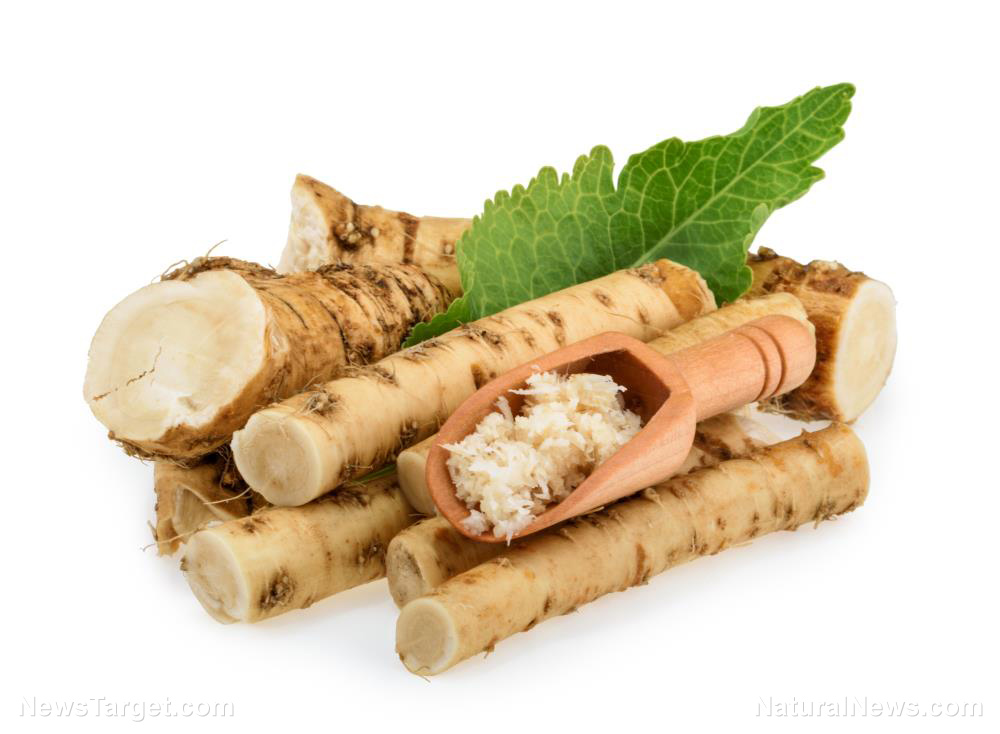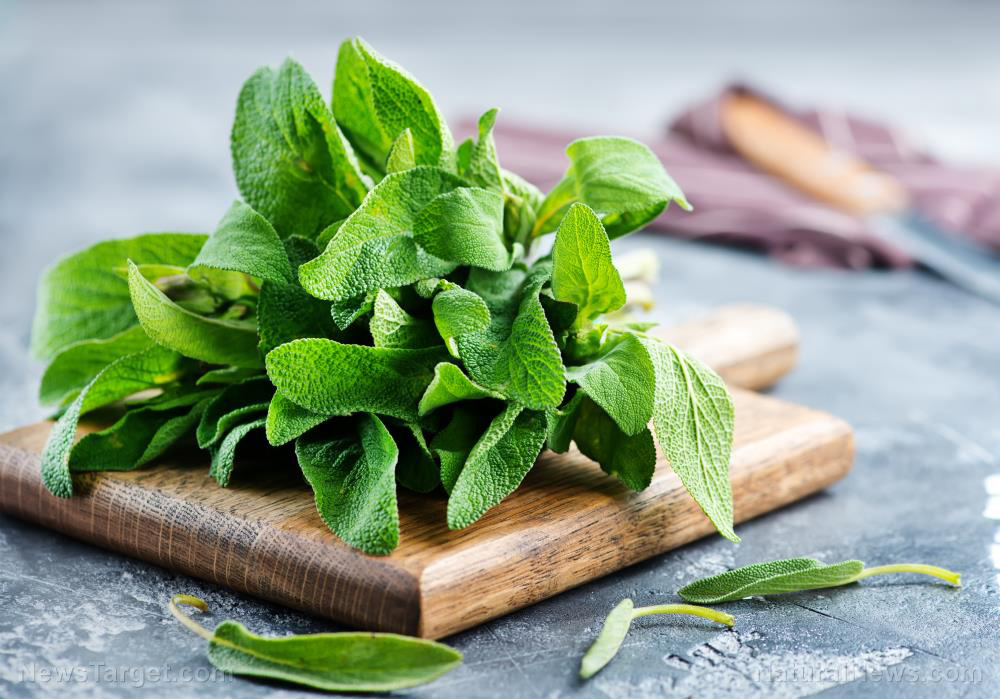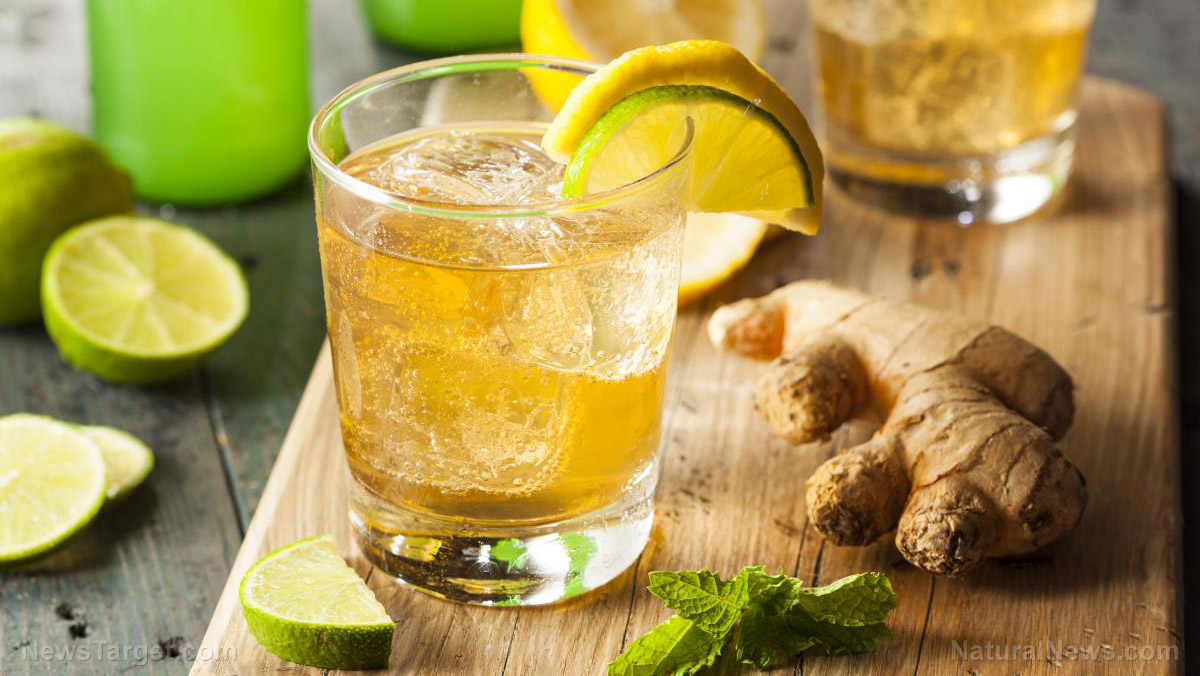
Advertisement
Many people know horseradish (Armoracia rusticana) as a grated spicy condiment that goes well with fish and meat. But this tangy and pungent herb is also packed with health benefits. The horseradish plant is native to Southeastern Europe and West Asia but is now commonly grown in various regions with temperate climates.
Horseradish is easy to cultivate and will grow even if neglected for long periods. It is a full-sun plant that grows well in slightly moist soil. Bright green leaves sprout from the main horseradish root, which is commonly used as a culinary ingredient. While its roots and leaves are edible, horseradish root becomes woody and unappetizing with age.
Aside from being used as food, horseradish has been used to treat various ailments for thousands of years. The Greeks and Romans used it to ease muscle pain, backaches and menstrual cramps. Horseradish has also been used to alleviate scurvy, toothache, coughs and asthma. It was only in the 16th century that Europeans began using horseradish as food.
But how exactly can spicy horseradish help make you healthy? Here are three reasons.
Horseradish contains chemicals that help prevent cancers
The pungent flavor of horseradish comes from chemicals called glucosinates, which have been found to help eliminate cancer-causing free radicals and toxins from your body. Horseradish contains approximately 10 times more glucosinolates than its relative, broccoli. When you eat horseradish, your body breaks down its glucosinates into compounds called isothiocyanates and indoles, which exhibit anti-cancer properties.
Horseradish fights certain pathogens responsible for some diseases
Horseradish is also a source of allyl isothiocyanate (AITC) which kills pathogens behind some common ailments. A 2017 study found that AITC decreased the population of Helicobacter pylori, which causes stomach ulcers, in the digestive system of gerbils. A subsequent study done two years later found that AITC also destroyed Escherichia coli bacteria. Lower pH levels bolstered the horseradish compound’s effect on this food-borne pathogen.
Horseradish helps fight harmful cancer cells in the bladder
Horseradish promotes frequent urination, and its diuretic properties contribute to addressing bladder cancer! A 2010 study revealed that the AITC content of horseradish inhibits the growth of bladder cancer cells. The study’s authors explained that the compound reaches cancer cells in the bladder through the urine. Once AITC reaches your bladder, it targets the cancer cells while leaving your healthy cells alone.
This spicy herb is readily available nowadays because of its use as a condiment. You can purchase ready-made horseradish sauces and dip from a grocery near you. Dried horseradish is also available in many markets. But it is important to note that cooking horseradish can deprive it of some key nutrients – so you ought to use it fresh.
Horseradish can be used for both meat and vegetable dishes. You can add it into salads, devilled eggs and mayonnaise to give them a spicy kick. It also works best as a condiment for steak or prime rib.
You can also prepare horseradish at home, but you have to do some safety precautions. You should prepare horseradish in a well-ventilated area, as it releases fumes when being grated or cut. These fumes can irritate your eyes and nose. If you are preparing horseradish indoors, make sure to open some windows to let some air inside. The smell of horseradish can easily take over an enclosed space.
The isothiocyanates in horseradish are responsible for both its pungency and the irritation that comes with handling the vegetable. But these same compounds rapidly deteriorate once exposed to air, so it’s best to add vinegar to the horseradish immediately after grating. The vinegar neutralizes the reaction and stabilizes the horseradish’s flavor, resulting in a milder taste. You may end up with a very bitter horseradish if vinegar is not added at the soonest.
You can add horseradish to cooked dishes, but do so at the end as the heat eliminates its strong aroma and mellows down its flavor. Prepared horseradish – grated and mixed with vinegar – will last up to three months when stored in the refrigerator. But do note that horseradish loses its pungency quickly, so it is best used within three to four weeks.
Spice up your health by including spicy horseradish in your daily diet!
Visit Veggie.news to find out the health benefits of horseradish and other root vegetables.
Sources:
Advertisements







